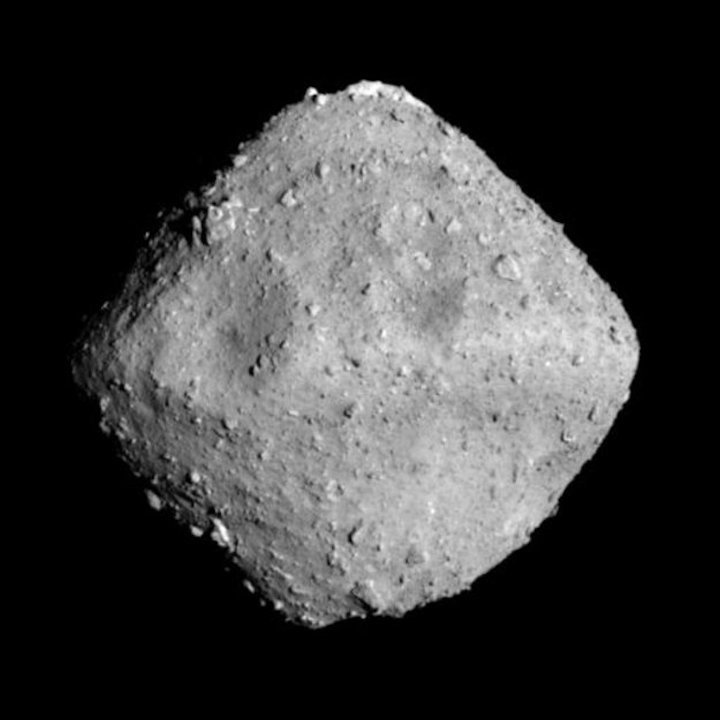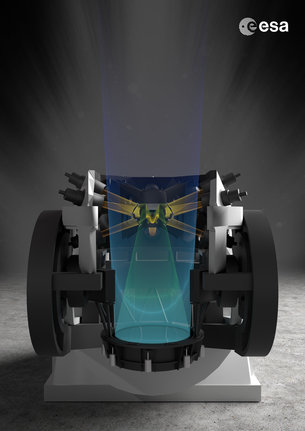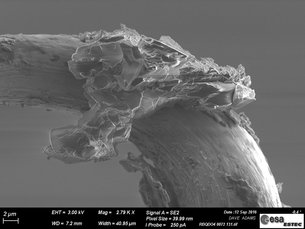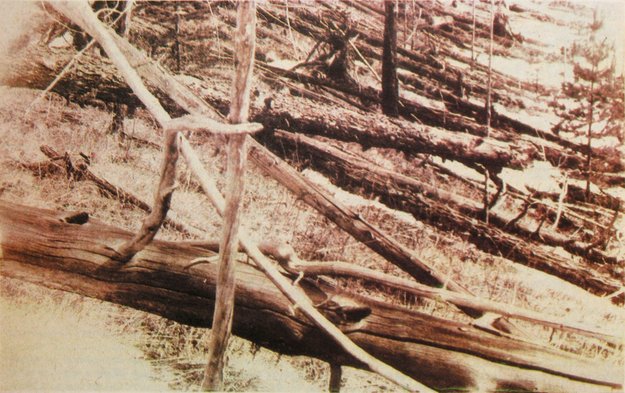25.06.2019

ESA MARKS ASTEROID DAY ON 30 JUNE
ESA will be participating in this year’s Asteroid Day, the UN-endorsed global awareness campaign day on the small rocky bodies scattered across space, taking place on Sunday, 30 June.
The main event will be a 24-hour live broadcast streamed from Luxembourg City, in coordination with hundreds of other events all over Europe and the world.
ESA will share with media and public its various activities related to asteroids, which it regards as a vital subject for scientific study, as ‘time capsules’ from early in the history of the Solar System and the birth of the planets.
Asteroids have influenced Earth’s development, as seen by the millions of impact craters scarring our world. They are also a promising source of future resources and – last but not least – they pose a proven threat to Earth and human civilisation. ESA is taking action as part of an international effort to mitigate this risk.
Over the last two decades, ESA has been performing detection and analysis of asteroids whose orbits bring them close to Earth, known as near-Earth objects (NEOs). There are an estimated 10 000 000 NEOs out there larger than 10 m – the threshold above which damage on the ground could happen.
As part of its space safety activities, ESA coordinates observatories and astronomers worldwide through its NEO Coordination Centre, located at ESA’s ESRIN facility in Italy.
Building on this experience, ESA has developed a new type of automated telescope for nightly sky surveys. This ‘Flyeye’ telescope splits its image into 16 smaller subimages to expand the field of view, similar to the technique exploited by a fly’s compound eye.
A network of these Flyeye telescopes would completely scan the sky and automatically identify possible NEOs for follow up and later checking by human researchers.
The first Flyeye telescope is being installed atop the 1865-m Monte Mufara mountain in Sicily; the same island where the very first asteroid was discovered back in 1801.
A network of Flyeye telescopes is being proposed for approval by Europe’s space ministers at Space19+ this November as part of ESA’s Space Safety initiative.
Testing asteroid deflection
Also being put forward as part of the Space Safety plans is Europe’s contribution to a pioneering international asteroid deflection experiment for planetary defence: the Hera mission, which is proposed for launch in October 2024.
Hera would be humankind’s first mission to a binary asteroid system, the Didymos pair of near-Earth asteroids.
The spacecraft would focus on the smaller of the two, which, if all goes well in the meantime, will have attained the unique status as the first body in the Solar System to have had its orbit shifted in a measurable way.
This orbit shift will have been carried out by NASA’s half of the experiment – the Double Asteroid Redirect Test, or DART. This spacecraft is due to slam into the asteroid moon in late 2022 in a bid to alter its orbit around its parent asteroid.
This deflection will be viewable from Earth telescopes and radars, but Hera will perform a close-up survey to gather essential extra information that would not otherwise be available. This includes the asteroid’s mass, the crater size and shape and the asteroid surface characteristics and subsurface makeup.
This added information should turn this grand, one-off experiment into a well-understood technique that could be tailored to particular targets, should an incoming asteroid ever needed deflecting for real.
Hera will also gather bonus science on the origins and nature of binary asteroids – a class making up 15% of all known asteroids – and test new technologies in deep-space conditions, including the deployment of Europe’s first CubeSats in deep space.
A pair of briefcase-sized spacecraft will make their own surveys of the asteroid with state-of-the-art miniaturised measurements before attempting landing.
This multi-spacecraft mission should therefore give vital experience in ultra-low gravity operations, valuable to the planning and design of future asteroid mining missions.
ESA is meanwhile performing scientific studies on asteroids, currently including analysis of microscopic grains returned to Earth by Japan’s Hayabusa mission in 2010.
Europe and asteroids
Europe’s history with asteroids goes back a long way. Our continent was home to the 19th century ‘celestial police’ group of astronomers who observed the first asteroids in the gap between Mars and Jupiter.
In the following century, it became clear that asteroids are also orbiting in the vicinity of Earth.
Asteroid Day commemorates the largest observed asteroid strike in recorded history – the 1908 airburst above Tunguska in largely deserted Siberia, which felled around 60 million trees.
This represented a lucky escape for Europe: it happened just a short rotation of Earth away from affecting heavily populated regions of our continent.
Fast forward a century and Europe came face to face with an asteroid for the first time, as ESA’s Rosetta mission flew past Šteins, a Gibraltar-scale diamond-shaped body.
A second close encounter took place in 2010, as Rosetta passed the mammoth 100 km-diameter Lutetia – some 250 times bigger than Rosetta’s final target, Comet 67P/Churyumov–Gerasimenko.
ESA hopes to build on the experience from Rosetta to finalise its Hera mission. Tiny, self-supporting CubeSats for asteroid exploration are also under development.
Asteroid Day reminds us that we live in a Solar System filled with ancient and fast-moving space rocks, and any impact could be devastating.
ESA is in a unique position, with the cooperation and support of 22 member states, to coordinate the data, information and expertise needed to understand and respond to asteroid threats as part of humanity’s planetary defence efforts.
Asteroid Day
Asteroid Day is a programme of Asteroid Foundation, a Luxembourg non-profit organisation.
Viewers around the world have been receiving a month of programming in celebration of Asteroid Day thanks to distribution via a dedicated SES satellite and online. The programming will culminate on 28 June with Asteroid Day LIVE, a 24-hour live broadcast produced by Asteroid Day and sponsored by SES, Broadcasting Center Europe and the Government of Luxembourg.
Each year on 30 June, the worldwide UN-sanctioned Asteroid Day takes place to raise awareness about asteroids and what can be done to protect Earth from possible impact. The day falls on the anniversary of the Tunguska event that took place on 30 June 1908, the most harmful known asteroid related event in recent history. Follow the 48-hour Asteroid Day broadcast from https://asteroidday.org/ this weekend, and join the conversation online via #AsteroidDay2019
Quelle: ESA





